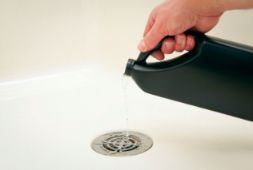If you have older windows that aren’t energy-efficient, consider upgrading them with replacement double-hung windows. These slip into the existing frame and can make your home look newer and more comfortable.
First, remove the window stops and parting beads from the inside of the casing with a putty knife or hammer and chisel. Use wood shims to create a level surface if the opening is uneven. Contact Your Home Exterior Solutions for professional help.
A broken window can let a lot of cold air in, increase your utility bills, and decrease the aesthetics of your home. Replacing your windows with energy-efficient, quality units can lower your bills and add value to your home. In addition, new windows will help keep your home insulated, block out UV rays and reduce noise levels. However, you must choose the right type of windows for your space. There are many options available including full-frame and insert replacement windows.
You should consult with a professional installer to learn more about the installation process for your specific window. The installer will measure the width and height of your current window opening. This information will be used to determine the size and style of your new windows. A full-frame replacement will add insulation around the entire window while an insert replaces only the movable part of the window.
Before beginning work, the installer will cover the floor and surrounding areas with tarps to minimize debris and dirt. A quality contractor will also take care to move furniture and wall decorations from the area where the work will be done. They will also ask you to check the weather to ensure that they can continue working in light rain and snow.
The first step is to remove the old window sash from the frame. If you have double-hung windows that open and close vertically, the sash will pull up to allow for removal. The installer will then cut out the existing window frame. Next, they will install a new interior stop molding and caulk the edges of the window frame. The installer will also reinstall any window blinds or curtains.
Once the window is in place, it should be shimmed to ensure that it sits level and plumb. If there are gaps between the window and the framed opening, they can be filled with elastomeric caulk. Gaps that are wider should be stuffed with foam or fiberglass insulation before applying the caulk.
After the gap has been sealed, you should run a few screws through each side of the window and into the framing. Avoid running too many screws as this can deform the window and reduce its performance. You should also never run screws through the bottom of the window as this can cause water leaks and void your warranty.
You should also ask the installer about the warranty for your new windows. A good contractor will stand behind their product and will provide a transferable warranty should you decide to sell your home in the future. To make the most of your new windows, you should clean them regularly and lubricate the sash and operating mechanisms once a year. This will help the windows to operate smoothly and prevent any damage or warping.
Measurement
Measurements are the foundation of any Window Replacement project. They are the key to determining the size of your new windows, and the accuracy of these measurements can mean the difference between a successful and frustrating installation. Incorrect measurements can lead to a faulty window installation, leaks and crooked windows. To avoid these problems, it is important to understand the measurement process and to take accurate measurements for your old windows before starting your project.
Start by determining if your old windows are square, meaning that each corner has a 90-degree angle. This will make the rest of the measurement process much easier. The next step is to determine the width and height of your existing window. To do this, place the tape measure in the corner of your window where the vertical and horizontal trim boards meet. Stretch the tape diagonally from the top right corner to the bottom left corner and record each measurement. Circle the shortest measurement, as this will represent the width of your window opening.
Repeat the same process for the height of your window, taking a measurement from the left, middle and right sides of the frame. Take three separate measurements and compare them. Choose the smallest measurement as your height, and note this number for later use.
Once you have your length and width measurements, it is important to subtract 1/8 of an inch from each. This will allow for expansion and contraction of the frame in response to weather conditions. If you do not subtract this amount, your replacement windows may not fit properly in the existing frame and could crack or warp.
Lastly, be sure to measure the depth of your window. While this isn’t necessary for most homes with standard replacement windows, in some cases the window depth can be too narrow to accommodate a new installation. To find the depth of your window, measure from the inside of the trim to the sill and record this measurement.
Now that you have your measurements, it’s time to finalize them. To do this, take the shortest measurements for height and width and round them down to the nearest one-eighth of an inch (if they are already in this increment, there is no need to adjust them). These numbers will serve as your replacement window guide when evaluating your options and placing your order. Relying on a single measurement for height or width will result in an inaccurate size, which can cause leaking or crooked windows. So be sure to measure your old windows in three different places and choose the smallest measurement for each. You can also contact your local window company to have a professional come measure the dimensions for you. This is a worthwhile investment, as it can help ensure that you get the perfect fit for your replacement windows.
Preparation
The preparation process for window replacement is just as important as the installation itself. A high-quality contractor will take steps to prepare both the work area and your home. This will save both time and money in the long run. It will also protect the surrounding areas of your home from debris and dust during window replacement.
The first step in preparation is to clear a pathway to each window, both indoors and outdoors. This includes moving tables, chairs, rugs, and breakable items that are in the path of the workers. You should also remove any plants or decorations on window ledges and sills. You should also inform your security company of the work that will be done to avoid any false alarms. Finally, it is helpful to move any vehicles, hoses or equipment located outside the windows in order to allow for clear outdoor access.
In addition, it is important to protect the flooring around your windows with drop cloths or plastic sheeting. If you have children or pets, it is a good idea to create a safe space away from the window installation work area. Additionally, you should consider taking down curtains and blinds to prevent damage during the window replacement process.
Once the work area is cleared, the installer will begin by removing the existing window. They will use a torch to heat the caulking, which allows them to break through the glass without damaging the frame or sash. After the sash is removed, they will drill holes through the head and sill jambs to insert new mounting screws. They will then re-seal the holes and test the operation of the window. If any issues are found, they will contact the project manager and have the correct window ordered.
A high-quality contractor will always sand and caulk the trim after window replacement. This will ensure that any gaps are filled and sealed and that the wood is protected against moisture and rot. This is a very important step and should be included in your contract. If a contractor does not include this in the contract, it is important to ask them for an estimate of how much this will cost separately.
After the trim is finished, the window is sanded and painted to match the other trim in your home. If you choose to have argon-filled glass, the installer will also add this to your window to provide additional insulation and help fight frost. They will also check that the window opens, closes and locks properly.
A high-quality contractor will also clean up the work area after finishing the job. This will include removing any old windows, vacuuming any debris and ensuring that no glass or window parts are left behind. In addition, they will re-caulk and paint the trim. This is a crucial step in ensuring that your window replacement is done properly and lasts a lifetime.



